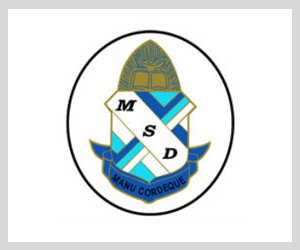Manitoba School for the Deaf (MSD)
Deaf Culture
What is Deaf Culture?
Please Note: The word Deaf used in this document, represents people who are Deaf, Hard of Hearing, including those who use any kind of amplification device such as hearing aids or cochlear implants.
Deaf Culture is simply Deaf people’s way of life. It means learned ways of acting, feeling and thinking based on a group who share common language, beliefs, values, traditions, social norms, and identity in a society. This includes the ability to make decisions, to be free to go where we want to go, to be free to interact with people who share common ground. Deaf culture is lived; it is intrinsic for deaf people, like breathing. It is a very comfortable way of life. Deaf culture meets all five sociological criteria (language, values, traditions, norms and identity) for defining a culture (Padden, 1980).
- American Sign Language (ASL) is the predominant visual language used by Deaf people in Manitoba. ASL and Deaf culture are inseparable. Every linguistic and cultural group has its own way of experiencing and expressing how they see and interpret the world and interact in it. ASL refers to the native visual cultural language of Deaf people, with its own syntax (grammar and form), semantics (vocabulary and content) and pragmatics (social rules of use). ASL and Deaf culture are intertwined and are passed down through generations of Deaf people. ASL is fundamental, and some say a birthright, to any Deaf person, child or adult. ASL is essential for social, linguistic and emotional growth. To truly internalize the language, Deaf people must have access to culture that is embedded in the language.
- Values in the Deaf community include the importance of clear language and communication for all in terms of expression, comprehension and appreciation. Deaf schools and Deaf events are important because of the natural social interaction they offer. Preserving ASL literature, Deaf heritage, Deaf literature and Deaf art are examples of what Deaf people value. ASL is highly valued by the Deaf community because it’s visually accessible. Deaf culture exists in Deaf schools and Deaf children in these schools are naturally enculturated. They have access to a Deaf environment that naturally provides cultural experiences such as after school activities.
- Traditions include stories, folklores, festivals, and theatres kept alive through Deaf generations, Deaf experiences and participation in Deaf cultural events (e.g. ASL Literacy in Deaf Schools, International Week of Deaf Awareness, etc.), to celebrate Deaf life and acknowledge the accomplishments and struggles of Deaf people throughout history (e.g., documentation of Deaf heritage in preserving a distinctive, diverse and enduring culture in Manitoba).
- Social norms refer to rules of behaviour in the Deaf community. Social norms of behaviour include interactions of people who use ASL as a language to communicate daily. Deaf people have rules of etiquette for getting attention, walking through signed conversations, leave-taking, and otherwise politely negotiating a signing environment. All cultures have their own set of behaviours that are deemed acceptable. For Deaf people, it includes getting someone's attention appropriately, using direct eye contact and correct use of shoulder tapping.
- Identity is one of the key components a whole person. Accepting that one is Deaf and being proud of his/her culture and heritage is key to be a member of the cultural group. It is important for Deaf adults from diverse backgrounds to recognize and accept their differences, while maintaining respect for Deaf language and culture. In this way the Deaf community is a welcoming place for many people, where there is room for growth and identity development.
Deaf Culture Facts
- The sign language used in the United States and Canada is not universal. Countries around the world have their own sign languages.
- Deaf people enjoy being a part of a community, which is collectivism in Deaf culture.
- Those in the Deaf culture community consider themselves members of a linguistic community, and the family members of a Deaf person are also considered members, even if they are not deaf themselves.
- Although there are hundreds of sign languages around the world, sign language itself is the fourth most popular language in the world.
- Technology is important to Deaf culture. Technology can improve communication between Deaf people and non-deaf people significantly.
- Properly designed architecture can make communication for Deaf people much easier, by minimizing obstructions and including design elements that free up the hands for sign language.
- Within Deaf culture, there are many notable writers, poets, actors, artists, and others who represent Deaf culture.
Sources Compiled from
Canadian Hearing Society - Deaf culture and communitySoftSchools.com - Deaf Culture Facts
The Canadian Encyclopedia - Deaf Culture

- MSD Calendar
- MSD Parents Calendar

- MSD Handbook

- Mission Statement

- Educational Resources
- Educational Research

- Links
- Forms
-
Upcoming Events
-
September 1: Labour Day September 2: Meet the Teacher 3 – 6 pm September 3: First day of school 9 am and Bus Ridership 3 pm September 17: Gr. 6 & 8 Immunization 9:30 am September 17: Hot lunch program September 19: Staff PD Day – (no school) Sep. 21 - 26: International Week of Deaf Peoples September 29: Staff Admin day (No school) September 30: National Day for Truth & Reconciliation (No school)